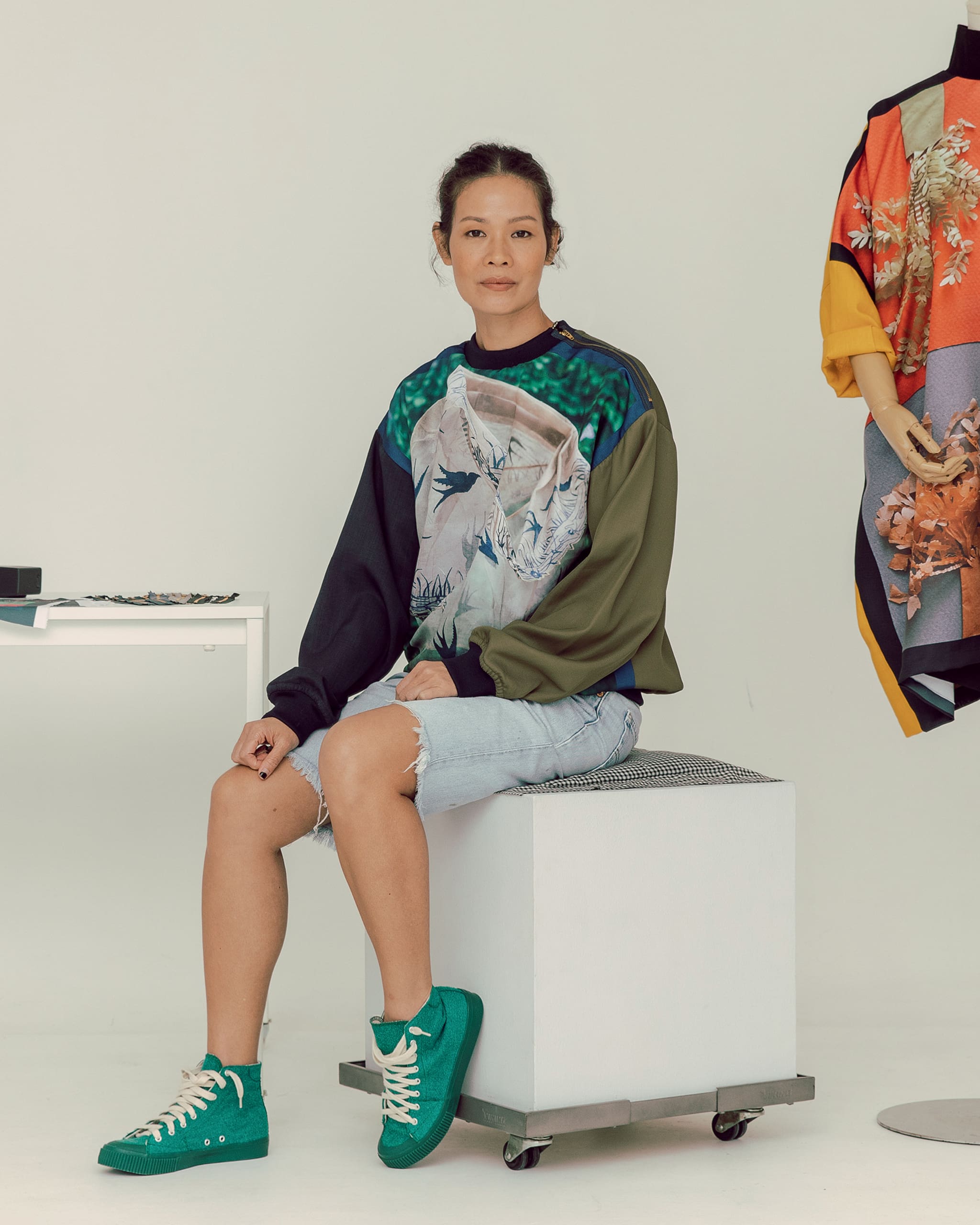Photo by Joseph Pascual
Jo Ann Bitagcol insists that the latest addition to her already robust fashion resumé was founded on purpose, miracles, and connections.
“I was a factory worker who became a model, then a photographer, and now a designer. For most of these transitions, I have been working with my hands. And now I am making clothes again, I don’t know if that makes sense,” Jo Ann Bitagcol ponders.
A true child of fashion, Jo Ann started out in the industry as a teen, with her often written discovery at a panciteria, blossoming into one of Philippine fashion’s finest and favorite muses. In the 2000s, she captivated a generation of sittings editors and junior models who observed her sinuous grace at work. Younger fashion creatives fondly called her Tita B. Up to today, designers and brands continue to request for her- behind and before the camera. Longevity and her fashion life comes in many forms.
In 2014, Jo Ann was called upon by scenographer Gino Gonzales and educator Mark Lewis Higgins, former clients she had modeled for, to photograph the dresses and accessories for the jointly authored Fashionable Filipinas: An Evolution of the Philippine National Dress in Photographs 1860-1960. Rich in material from the archives of the academe, museums, and the closets of the country’s best-dressed families, the Lilen Uy-trained photographer shot numerous iterations of the balintawak, terno, baro, and barong for the book. By the time the book was published and distributed in 2015, Jo Ann had amassed a collection of unpublished photographs that would become the nucleus of her future explorations of the intersection of art and fashion.
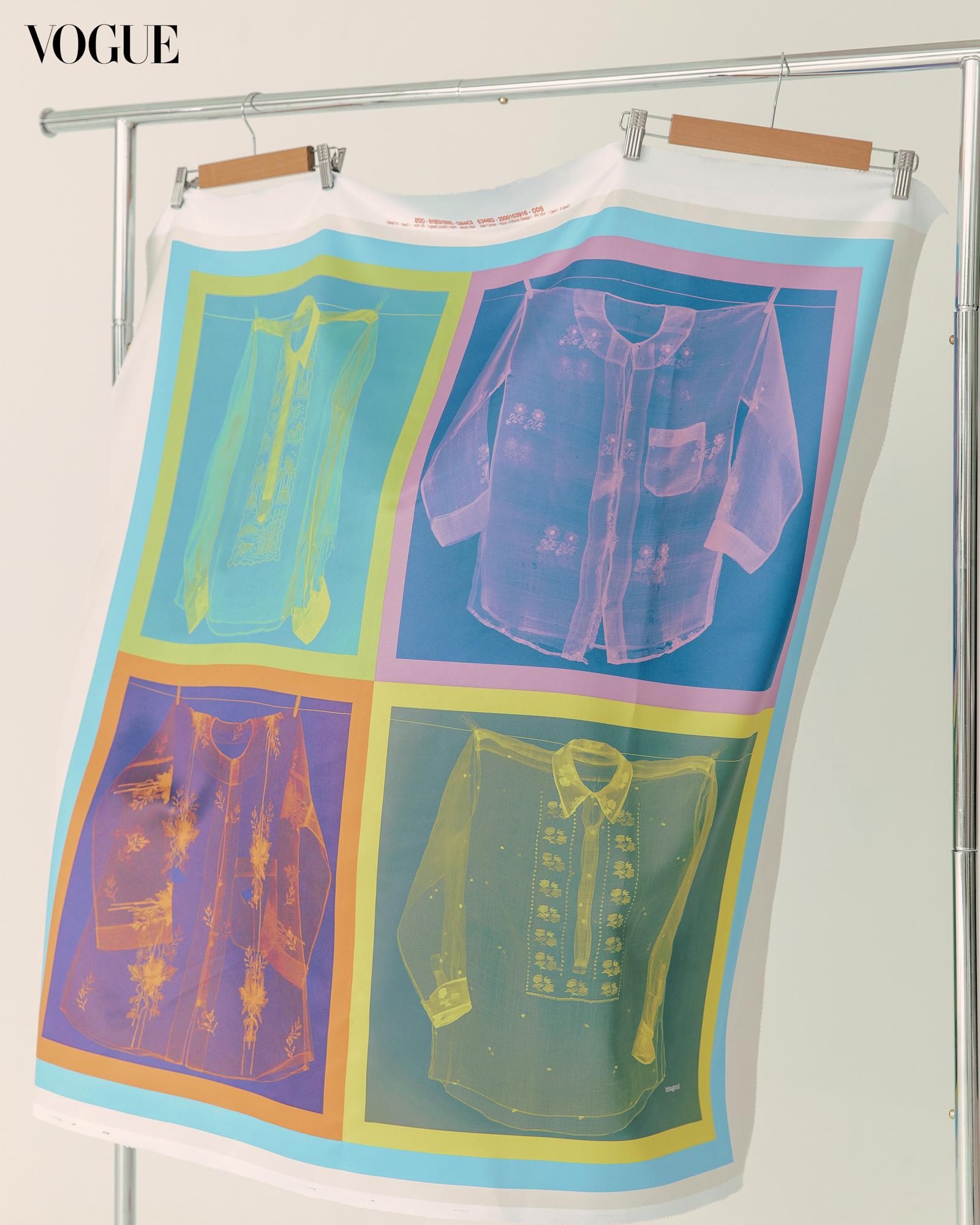
These outtakes from Fashionable Filipinas—close-up photographs of butterfly sleeves, baro, panuelo, payneta, and cameos—found their way to Art Fair Philippines in March 2019. First, as blown-up framed prints and later in the year, as scarves and wraps that her customers bought to drape around the body or hang on their walls. Adding “designer” to her resumé, she refers to this initial outing as the Baul collection.
Over the pandemic, her archival prints joined newly photographed items, surfacing on boxy, double-sided tops and sold under the eponymous Bitagcol brand. Jo Ann added vernacular themes of the barong tagalog, local flora, embroidered handkerchiefs, and pastillas wrappers. Vivid variations found life in dresses, skirts, and robes.
Amid a lockdown and the limitations set on mass gatherings, her small shirt and scarf operation had creative industry insiders and coolhunters buying off the rack or having items custom made. From ladies who lunch to millennials looking for alternative ways to wear Filipiniana, consumers have had eureka moments with the Bitagcol brand in all of its anti-fit, trompe l’oeil approach to heritage dressing.
Jo Ann insists that her journey to being a designer was the result of what is exactly written on her shop’s Instagram bio: purpose, miracle, and connection. Reviewing the events that led her from photographing for the book to capturing images for her own brand, she is convinced that hers is a case of one good thing that led to another. “I sensed a purpose in what feels like giving new life to something old and presenting it in a contemporary way [for a new audience] rather than just displaying it at a museum,” she tells Vogue Philippines.
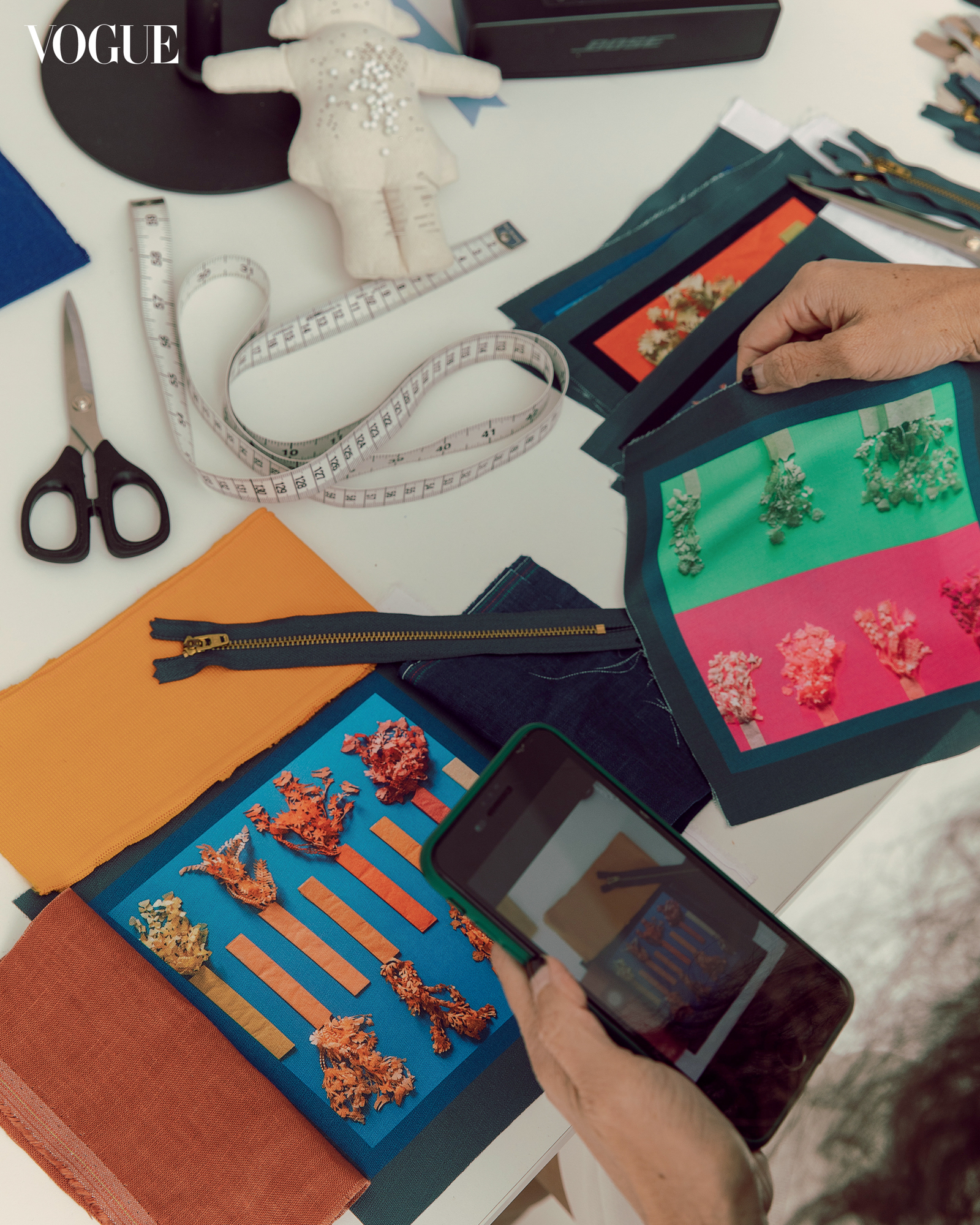

She credits friends such as furniture and accessories designer Rita Nazareno and creative force Luis Espiritu for giving her access to heritage pieces. She cites designer Joey Samson for challenging her to hunt down the right scarf fabric until the quality passed their standards. Years of frequenting the pop-ups of model-designers Tweetie de Leon and Malou Romero, and the sustained success of designer Rhett Eala’s ready-to-wear inspired her to finally open shop. “They are my earth angels, guiding me professionally and personally,” Jo Ann shares.
“My awareness and appreciation of Filipiniana and our culture has definitely changed from when I was still a model to now, as a designer,” she continues. “With what I do now—sourcing materials to photography, interviewing families about their heritage, it has given me a sense of purpose. [My work honors] our roots, our ancestors, the richness of our culture. And to make something new of them, creating with good intentions and out of love, that’s what the brand stands for now.”
With longevity and sustainability in mind, she is as hands-on with the business side as much as the creative. She insists on producing only based on actual demand with help of her two sewer-cutters but isn’t one to say no to scaling up either or turning in a bigger endeavor, given the right opportunity.
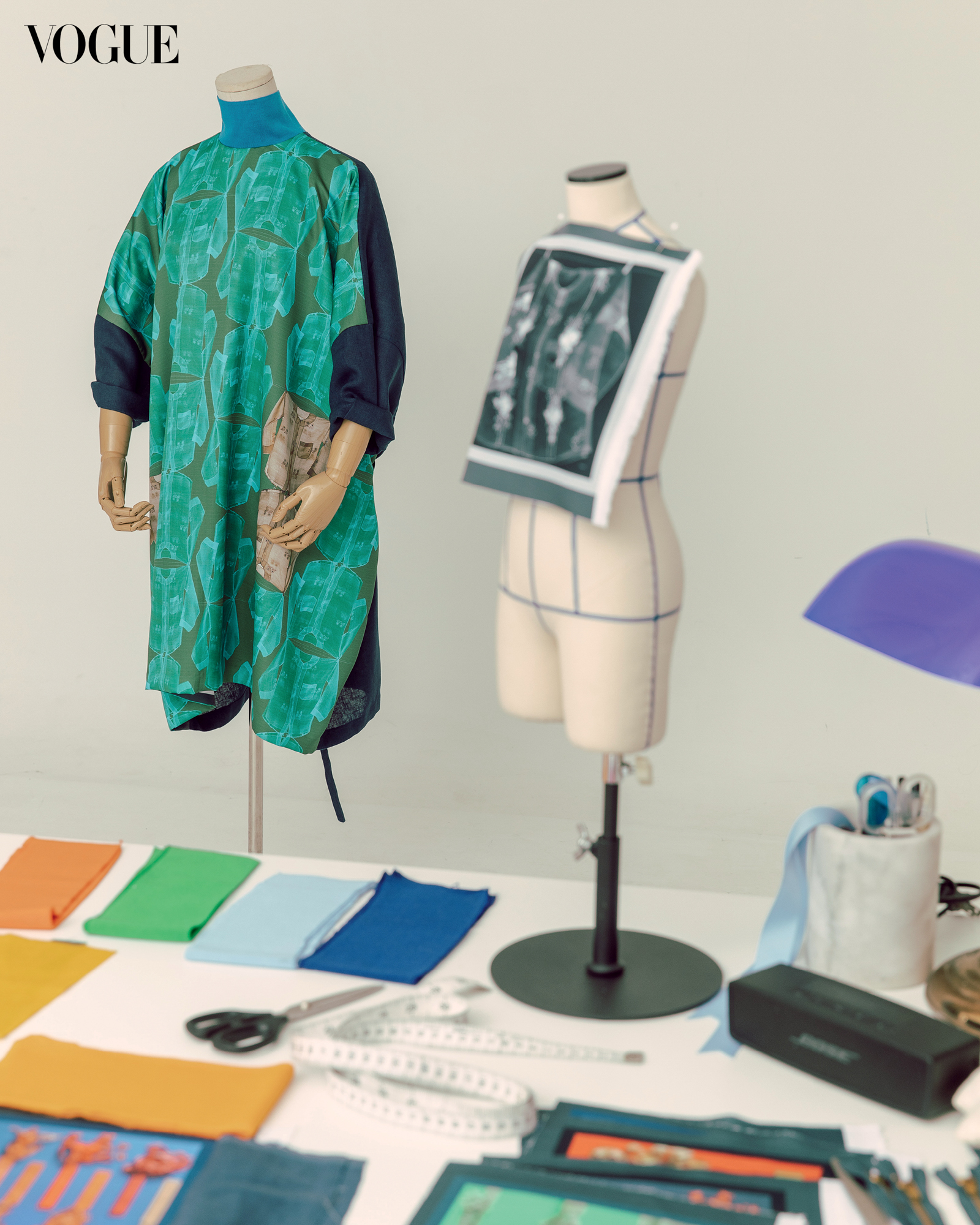
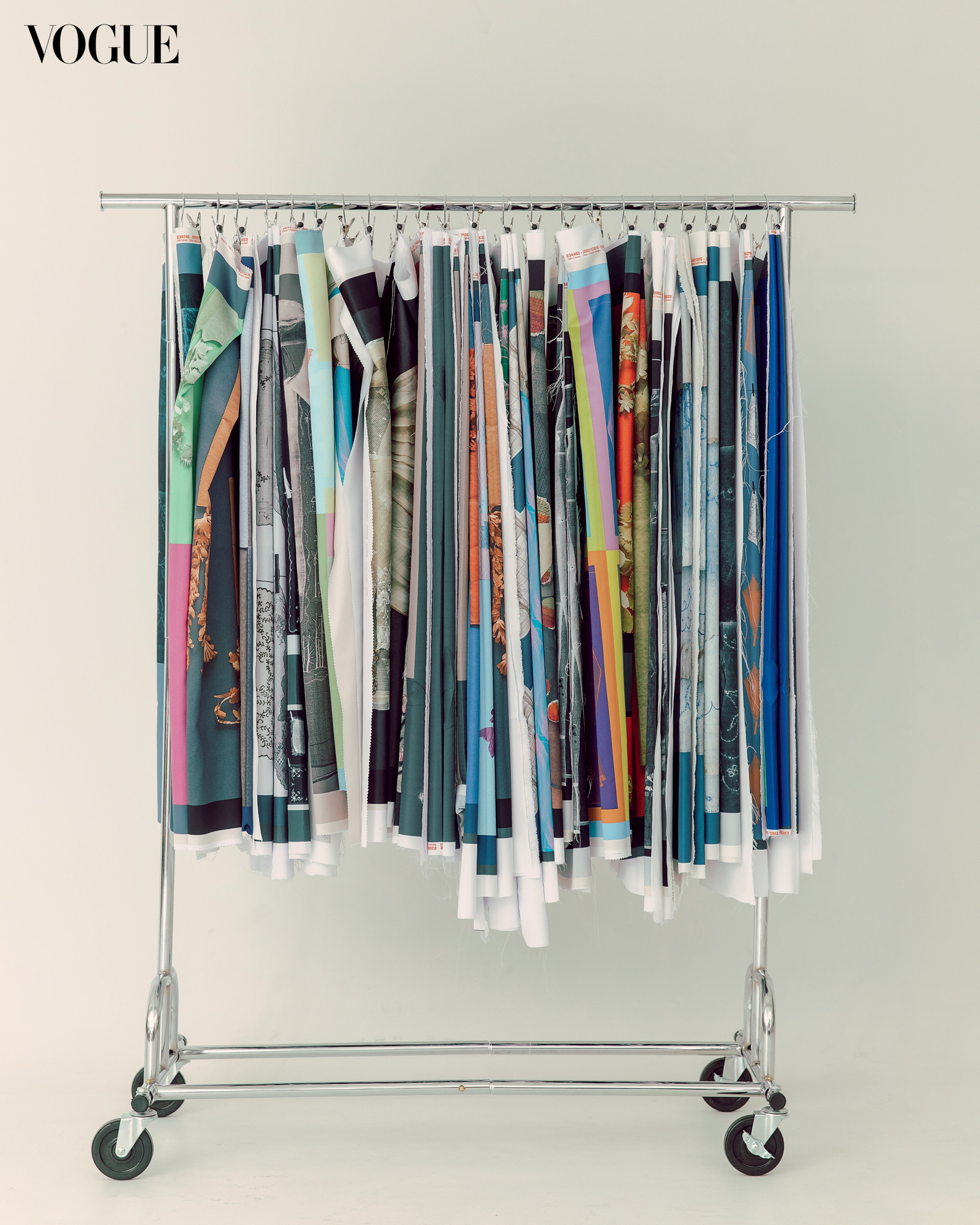
Her trajectory in the fashion industry is proof that constant self-improvement, good relationships, and introspection make quite the recipe for success today. But all these serve only as good additions to the foundation that Jo Ann formed as early as her childhood.
“I suppose many young girls had an episode or chapter when they dressed up their dolls; I used to sew, knit, and embroider clothes for my wooden dolls back then. I was top of the class in that subject, too.” Jo Ann eventually ended up working at a clothing factory, behind a wheel that spun cotton thread that transformed into various garments. It seems as if she has led a life bookended by vestments. Now, with a clothing line yielding into a full circle, Jo Ann is poised as one of Philippine fashion’s most modern minds.
Photographs by Joseph Pascual. Fashion Editor Daryl Chang. Makeup: Don de Jesus. Hair: Mong Amado. Producer: Anz Hizon. Stylist’s Assistant: Ticia Almazan
